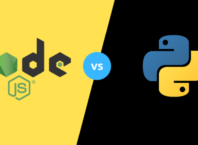Are you planning on switching from Windows to Mac?
With Macs being more competitive to Windows and the devices that support it, more people are making the switch and use the underdog brand. Most find the new platform better-suited for them, while others struggle with basics like software installation. This new wave of Mac users are even unaware of certain things and ask even the most basic questions.
The most asked question is “Can a Mac get a virus?” This is because of old claims from users of the earlier versions of Mac devices. While it’s true to some degree that Macs are more resistant to malware, it doesn’t mean that it can’t get infected.
Read on to learn all you need to know about Mac and its anti-virus capabilities. Keep your device safe and free from any threatening data now!
Contents
1Can a Mac Get a Virus?
Do Macs get viruses? The short answer is yes, Macs can get viruses. The only reason people think otherwise is that Apple is selective with the apps that it allows users to download.
The company is thorough in screening all apps before they put it up for sale on the Apple App Store. The internet allows more people to download any software through different platforms, though. Apple can’t ensure the software’s integrity if you download software this way.
This is the main way for most viruses to get into your device. Once you install an infected program into your device, the virus accesses your files and does what it’s programmed to do.
Viruses can also enter your device through ads. Some ads have malware riding along for when you click on them. This means that you need to be wary of any ad that you click on, especially those from shady sites.
2Viruses Macs Can Get
There’s not only one kind of virus that can infect your Mac. Here’s a small list of the common viruses that can infect your Mac. These viruses do different things and enter your device through different means.
Adware
This is the virus that rides often rides along with the ads that you see on different websites. These enter your Mac and mine your device for data to steal.
It often uses this stolen data to bombard you with ads that you may find appealing. The thing is, if you click on any of these ads, it only introduces more adware to bombard you with.
Some adware can be even more dangerous. These will record any data that you come across on the internet and even the information you input on your device. This means your credit card numbers, passwords, and email addresses are all at risk of theft.
Trojan Horses
The virus gets its name because it’s often packaged along with an update for an app you have in your device. These can be the updates from any app you installed outside of the Apple App Store.
These often got packaged in fake Flash updates. This is a major reason for the support for Adobe Flash to stop in most devices. Once the virus is in, it will swipe your passwords and send them to the virus creator.
Ransomware
This virus keeps evolving to become more threatening as time passes. At first, ransomware could only lock you out of your computer. It would then tell you to send money into an anonymous account before it will unlock your device.
You could attempt to unlock it without playing to their rules, but it can mean the loss of all the data you had in your device before the ransomware took effect. Nowadays, ransomware can access your device’s features to find blackmail material.
Some perform a simple hack to steal important-looking data from your drives. Others will access your camera or microphone to gather blackmail material. They will then use those against you to get you to pay them.
3Signs of Infection
Can a Mac get a virus? If so, how can you tell? Here are the telltale signs that your device has a virus moving around in your folders.
Ads and Pop-Ups
Ads and pop-ups are obvious signs that some adware has attacked your device. This can be annoying for anyone who’s working on their device. This is because these ads can still appear even if you’re not using a browser.
The adware forces ads to appear on your default desktop, cluttering your home screen. Ads with misleading sizes and close buttons can even appear. This can force you to click on the ad itself, allowing more adware to invade your Mac.
Slow-Running Devices
The main problem with malicious software is that it consumes the processing power of your device. This means your Mac slows down and won’t be able to run even the simplest of commands. It can also cause the spinning wheel of doom to appear more often than you’re accustomed to.
4How Macs Prevent Most Attacks
Apple does well in helping its users prevent any viral attacks on their devices. The built-in malware protection that macOS has is a big part of your device’s protection. This is because of the features it provides like the Gatekeeper function.
It prevents any unapproved software from getting installed into your Mac. It will keep blocking it until you command the software to stop. XProtect also does the same thing, but only prevents the program from running in your device.
The built-in software also has a malware removal tool. It detects any known virus and deletes it from the device’s drives. Each update that Apple releases will add new viruses to the removal tool’s list.
Keeping these active means you won’t get to install much of the software that you want to use. It is the best way to keep your device free of malware, though.
Prevent Malware and Viruses from Attacking Your Mac Today
Can a Mac get a virus? Learn all you need to know about it and prevent the next attack now! Help your device stay safe and clean it up today!
Do you want to learn more about the security features of Apple devices? New security threats pop-up every day and can be a big threat to your device. So, keep yourself updated with our blogs and articles today!












